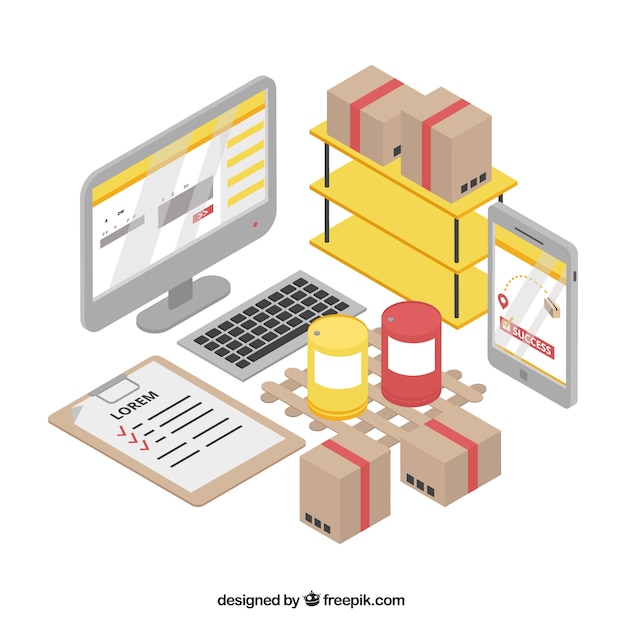Amazon is a giant in the e-commerce world, holding over 40% of the market share in the United States. It’s no wonder that so many people choose Amazon for their online shopping needs, given its convenience and savings. But Amazon isn’t just for shoppers. If you’re thinking about starting an online business with minimal start-up costs, Amazon is a platform you should consider.
One of Amazon’s services, Fulfillment By Amazon (FBA), allows you to start an online business without worrying about complex logistics or hiring employees. You can sell products on the same platform where you probably do most of your online shopping. Starting an Amazon FBA business isn’t a light decision, but if you’re looking for a new side gig with full-time potential, selling on Amazon is worth a shot.
So, what is Amazon FBA? It’s a popular choice for businesses and independent sellers to sell their products on Amazon. Like dropshipping, Amazon FBA largely eliminates the need for you to store inventory and process orders. Instead, you ship inventory to Amazon warehouses. When you make a sale, Amazon handles shipping and fulfillment, freeing you from that logistical step. In return, you pay Amazon storage and fulfillment fees.
The brilliance of Amazon FBA is that it uses Amazon’s expertise and infrastructure for order fulfillment. This allows you to focus on sourcing products and optimizing your listings rather than dealing with endless customer service issues. Amazon FBA is incredibly popular and profitable because of this business model. More than 50% of goods sold on Amazon come from third-party sellers. In 2018, over 50,000 small and medium-sized businesses exceeded $500,000 in sales by using Amazon, according to the company. Clearly, Amazon is a lucrative marketplace if you learn how to make the most out of FBA.
Starting an Amazon FBA business has its pros and cons. On the plus side, Amazon is already one of the largest e-commerce marketplaces in the world. Although selling on Amazon is competitive, Amazon FBA lets you reach an existing customer base rather than starting your own store from scratch. Amazon FBA’s competitive advantage over running your own operation is that you leverage Amazon’s logistical expertise. Once you learn how to package and ship your inventory to Amazon, selling on FBA becomes incredibly simple from a fulfillment standpoint. Plus, you can pay additional fees to have Amazon handle packaging on your behalf if you don’t want to complicate things.
On the downside, Amazon FBA simplifies logistics, but this comes at a cost. Between seller account fees, storage, and shipping, your profit margin takes a hit for the sake of convenience. Plus, you have to invest in inventory upfront, which is different from dropshipping or using websites like Etsy, where you typically manufacture products as you make sales.
If you want to create your own Amazon FBA store, the process is fairly straightforward. You need to create an Amazon seller profile to sell anything on Amazon. You can choose between two plans depending on how serious you are about selling: Individual and Professional. Amazon also charges a referral fee for each sale regardless of your plan. If you’re trying Amazon FBA for the first time, starting with an individual plan is an affordable way to test the platform.
Amazon FBA is a fulfillment model, but there’s a surprising amount of flexibility in terms of what you can sell. Typically, Amazon FBA store owners use three strategies to find products to sell: Product Reselling, Private Label, and Selling Your Own Product. Once you identify products you want to sell on Amazon, you have to purchase the inventory to send to Amazon’s warehouses. This is different from starting a dropshipping store where you only pay for inventory after you make a sale.
You should create Amazon product listings once you receive your inventory. While it might be tempting to create listings ahead of time, it’s a good idea to inspect your inventory before listing to ensure there aren’t defects and that you have an accurate inventory count.
Once received, Amazon stores your inventory in its warehouses and handles shipping to customers. However, you have to follow specific shipping protocols so Amazon can safely store and ship your orders.
Starting an Amazon FBA business might seem overwhelming because of all the steps. However, it’s important to remember that like any online business, practice makes perfect. Over time, you become more familiar with selling requirements, packaging rules, and what products have the potential to sell well on Amazon.
As mentioned, more than 50,000 small and medium-sized businesses earn more than a half-million dollars by selling on Amazon. Plus, there are even more smaller sellers who use Amazon FBA to make extra cash on the side. However, Amazon is extremely competitive. If you want your Amazon FBA business to succeed, you need to have a game plan to find winning products.
It’s never been easier to start an online business thanks to the power of technology, and Amazon FBA is the perfect example. After all, few business models let you access millions of customers and take care of logistics and customer service for you. Just remember to start out slow and to scale with your profits. Selling on Amazon isn’t easy money, and the worst thing you can do as a new seller is to hop on a trend and spend too much money upfront in inventory. As long as you have patience and are willing to put in the work to learn Amazon’s rules, there’s no reason why you can’t turn Amazon FBA into a lucrative side hustle.
